


A Healthier, Safer, And Greener Way To Clean

In a world where environmental consciousness and personal health are taking center stage, the practice of chemical-free cleaning is gaining significant attention. This approach to cleaning focuses on eliminating the use of harsh, toxic chemicals in favor of natural, non-toxic alternatives. In this article, we will explore the benefits and methods of chemical-free cleaning, and why it's a choice worth considering for a cleaner and safer home.
The Problems With Conventional Cleaning Chemicals
Traditional cleaning products often contain a slew of chemicals, including ammonia, chlorine, and various synthetic fragrances. While these chemicals may effectively clean and disinfect, they can also pose risks to human health and the environment.
Health Hazards: Many conventional cleaning products release volatile organic compounds (VOCs) into the air, contributing to indoor air pollution. Prolonged exposure to VOCs can lead to respiratory issues, allergies, and skin irritations.
Environmental Impact: Harsh cleaning chemicals are not eco-friendly. When washed down drains, they can contaminate water systems and harm aquatic life. The production and disposal of these chemicals also contribute to pollution and waste.
Chemical Residue: Residues from chemical cleaners can linger on surfaces, posing long-term health risks, especially in homes with children or pets.
Benefits Of Chemical-Free Cleaning
Healthier Indoor Air: Chemical-free cleaning means cleaner indoor air quality, reducing the risk of respiratory problems and allergies for you and your family.
Reduced Health Risks: Non-toxic cleaning products reduce the risk of skin irritations and other health problems associated with chemical exposure.
Environmentally Responsible: Chemical-free cleaning is gentle on the environment. It doesn't contribute to water pollution, and it reduces the production and disposal of harmful chemicals.
Safer For Children And Pets: Chemical-free cleaning eliminates the risk of harmful chemical residues on surfaces, making your home safer for kids and pets.
Methods Of Chemical-Free Cleaning
Vinegar And Water: A mixture of white vinegar and water can be used to clean glass, countertops, and even sanitize surfaces.
Baking Soda: Baking soda is an excellent abrasive cleaner. It can be used to scrub surfaces, deodorize, and even extinguish small fires.
Lemon Juice: Lemon juice can cut through grease and grime. It also leaves behind a fresh, citrus scent.
Essential Oils: Many essential oils, such as tea tree oil, lavender oil, and eucalyptus oil, have natural cleaning and disinfecting properties.
Microfiber Cloths: Microfiber cloths effectively capture and remove dirt, dust, and allergens without the need for chemical sprays.
Steam Cleaners: Steam cleaning uses hot water vapor to disinfect and clean various surfaces without the need for chemicals.
Getting Started With Chemical-Free Cleaning
To adopt chemical-free cleaning practices, begin by assessing your current cleaning products. Identify any chemical-based cleaners you use and replace them with natural alternatives. Invest in reusable and eco-friendly cleaning tools like microfiber cloths, mop heads, and steam cleaners. Read labels carefully when purchasing new cleaning products and choose those that are certified as non-toxic and environmentally friendly.
Chemical-free cleaning is more than just a trend; it's a commitment to a healthier and greener way of living. By eliminating toxic chemicals from your cleaning routine, you not only create a safer and cleaner living environment but also make a positive contribution to the well-being of the planet. Your home can be sparkling clean without harmful chemicals - a choice that benefits you, your family, and the Earth.
A Path To Sustainability And Well-Being
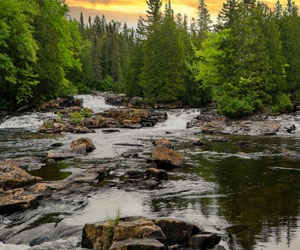 Harmony with nature is not merely an abstract ideal; it is a practical and philosophical approach to life that has profound implications for our environment, mental well-being, and the future of our planet.
Harmony with nature is not merely an abstract ideal; it is a practical and philosophical approach to life that has profound implications for our environment, mental well-being, and the future of our planet.
At its core, harmony with nature emphasizes the interconnectedness of all living things. It acknowledges that humans are not separate from the environment but an integral part of it. When we live in harmony with nature, we treat the Earth and its resources with respect, realizing that our actions have consequences not only for the planet but for future generations.
One of the fundamental principles of harmonious living is sustainability. This means using resources responsibly, minimizing waste, and conserving energy. Sustainable practices include reducing, reusing, and recycling, and making choices that have a lesser impact on the environment. By embracing sustainability, we reduce pollution, conserve biodiversity, and decrease our carbon footprint.
Opportunities And Challenges For A Changing World
 The world's population has been steadily increasing for centuries, driven by a combination of factors, including increased life expectancy, reduced mortality rates, and, in some regions, high fertility rates. While the global population growth rate has been slowing down, it remains a significant concern due to its implications on resources, infrastructure, and quality of life.
The world's population has been steadily increasing for centuries, driven by a combination of factors, including increased life expectancy, reduced mortality rates, and, in some regions, high fertility rates. While the global population growth rate has been slowing down, it remains a significant concern due to its implications on resources, infrastructure, and quality of life.
One of the challenges associated with rapid population growth is the strain it places on resources. As the number of people on the planet increases, so does the demand for essentials like food, water, energy, and housing. This growing demand can lead to resource scarcity, environmental degradation, and increased competition for limited resources.
Moreover, population growth often has economic implications. While a growing population can contribute to a larger labor force, which can be a source of economic growth, it can also lead to unemployment and underemployment if job opportunities do not keep pace with the increase in the labor force.
Gardening For Wildlife
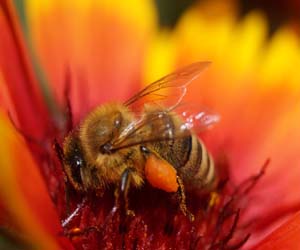 Pest Control: Many of the creatures you invite into your garden, such as birds and beneficial insects, are natural pest controllers. They help keep populations of garden-damaging insects in check.
Pest Control: Many of the creatures you invite into your garden, such as birds and beneficial insects, are natural pest controllers. They help keep populations of garden-damaging insects in check.
Pollinators: Gardens that attract pollinators like bees and butterflies ensure the successful pollination of plants, leading to bountiful harvests of fruits, vegetables, and flowers.
Education: Gardening for wildlife is an educational opportunity for children and adults alike. Observing the behavior and interactions of birds, insects, and other creatures fosters a deeper appreciation for nature.
Aesthetics: A garden designed for wildlife can be a beautiful and thriving oasis, filled with the sights and sounds of the natural world. It can be a serene and inviting place for human enjoyment.
Tips For Gardening For Wildlife:
Plant Native Species: Native plants provide food and habitat for local wildlife. Research which plants are native to your area and incorporate them into your garden.
Provide Water: Birds, insects, and other wildlife need water for drinking and bathing. Install a birdbath or a small pond to offer a water source.
Habitat Diversity: Create a variety of habitats in your garden, including meadows, woodlands, and wetland areas. Different creatures require different types of environments.
Shelter And Nesting Sites: Incorporate birdhouses, bat boxes, and bee hotels to provide shelter and nesting opportunities for various species.
Strategies And Implications
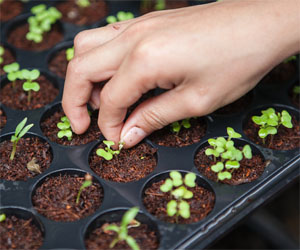 Higher yields in agriculture refer to the increased production of crops, livestock, or other agricultural products per unit of land, water, or other resources. This increase in productivity is essential for several reasons:
Higher yields in agriculture refer to the increased production of crops, livestock, or other agricultural products per unit of land, water, or other resources. This increase in productivity is essential for several reasons:
1. Food Security: With a global population that continues to expand, the need for increased food production is evident. Higher yields help ensure that there is enough food to feed everyone.
2. Economic Growth: Agriculture is a significant driver of economic growth in many countries. Higher yields can boost rural economies, create jobs, and increase income for farmers and agricultural businesses.
3. Environmental Sustainability: Efficient farming practices that result in higher yields can help reduce the environmental impact of agriculture. By producing more food with fewer resources, we can minimize habitat destruction, water usage, and greenhouse gas emissions.
Strategies For Achieving Higher Yields
Numerous strategies and technologies contribute to higher yields in agriculture:
1. Improved Crop Varieties: Developing and adopting high-yielding crop varieties through selective breeding and genetic modification is a primary strategy. These varieties are often more disease-resistant and better suited to specific environmental conditions.
2. Precision Agriculture: The use of technology, such as GPS, sensors, and data analysis, allows farmers to make precise decisions about planting, irrigation, and fertilization. This optimizes resource use and boosts yields.
3. Sustainable Practices: Techniques like crop rotation, reduced tillage, and cover cropping can improve soil health and enhance crop yields while minimizing environmental harm.




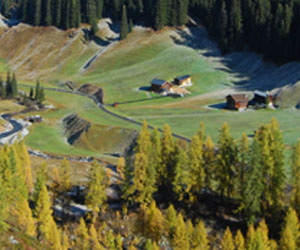

The Liberating Power Of Minimalism
 The modern consumerist culture often bombards us with messages that more is better, and that happiness can be found through the acquisition of material possessions. However, this mindset can lead to cluttered lives, financial strain, and a sense of emptiness. "Freedom from excess" challenges this narrative, offering a different perspective on what constitutes a fulfilling life.
The modern consumerist culture often bombards us with messages that more is better, and that happiness can be found through the acquisition of material possessions. However, this mindset can lead to cluttered lives, financial strain, and a sense of emptiness. "Freedom from excess" challenges this narrative, offering a different perspective on what constitutes a fulfilling life.
Here are some key aspects of this philosophy:
Minimalist Living: At its core, "freedom from excess" aligns with minimalist living. It encourages individuals to declutter their living spaces, reduce their material possessions, and focus on the essentials that truly add value to their lives. Minimalist living emphasizes quality over quantity and promotes the idea that less can be more.
Financial Freedom: A focus on "freedom from excess" includes mindful spending and the avoidance of unnecessary debt. By living within one's means and reducing unnecessary expenses, individuals can experience financial freedom, reduce stress, and achieve greater control over their financial future.
Environmental Responsibility: Excessive consumption has a substantial impact on the environment. Minimalist living reduces waste, conserves resources, and lessens the carbon footprint. It encourages eco-friendly practices such as reusing, recycling, and reducing energy and water consumption.
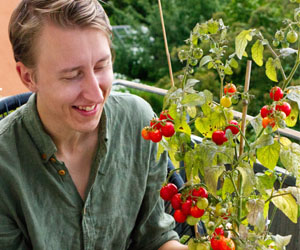 Growing your own food is not just a trend; it's a way of life that offers a plethora of benefits for individuals, communities, and the planet.
Growing your own food is not just a trend; it's a way of life that offers a plethora of benefits for individuals, communities, and the planet.
The Resurgence Of Home Gardening
In recent years, there has been a significant resurgence in home gardening. People from all walks of life are rediscovering the joy and satisfaction that comes with nurturing a garden and producing their food. Whether you have a sprawling backyard or just a tiny balcony, there's a way to grow something that will grace your table with fresh, homegrown flavors.
The Joys Of Growing Your Own Food
One of the most immediate and rewarding aspects of growing your own food is the connection you establish with the earth. As you till the soil, plant seeds, and watch your crops grow, you become part of the natural world's cycles. The joy of seeing a tiny seed sprout into a thriving plant and, eventually, bearing fruits or vegetables is a deeply gratifying experience. It's a tangible connection to the earth's rhythms.
Nutrition And Health Benefits
Homegrown produce is not only delicious but also healthier. You have control over what goes into your garden, which means you can choose to grow organic, pesticide-free food. This translates into fresh, nutrient-rich produce that you can pick at the peak of ripeness, ensuring the highest levels of vitamins and minerals.